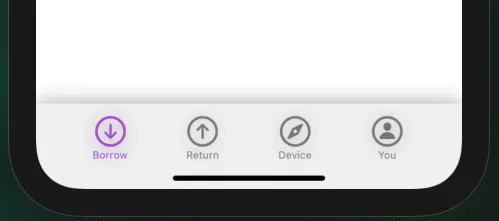我正在尝试在SwiftUI中实现TabView,使其与屏幕背景颜色相同,但同时在其上方具有像这张图片中那样的阴影:

到目前为止,我已经成功显示了颜色,但我不知道如何添加阴影。这是我的代码:
struct ContentView: View {
init() {
let appearance = UITabBarAppearance()
appearance.configureWithTransparentBackground()
UITabBar.appearance().standardAppearance = appearance
}
var body: some View {
TabView {
Text("First View")
.tabItem {
Image(systemName: "square.and.arrow.down")
Text("First")
}
Text("Second View")
.tabItem {
Image(systemName: "square.and.arrow.up")
Text("Second")
}
}
}
}
有人知道如何做到这一点吗?我将感激您的帮助 :)


UITabBar.appearance().isHidden = true那样隐藏子视图的TabView),最终我发现只拥有自己的TabView更加灵活,并且最终编写的代码更少,但这是一个偏好问题。 - BiOS